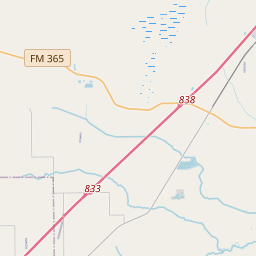City of Nederland
Historical marker location:






Settled by Dutch immigrants in 1897; named for their native Netherlands, which in the 1890s suffered overcrowding, wornout soil, and scant hope for prosperity. Thus when the Port Arthur Land Company (joined by Dutch businessmen) advertised the abundance of America, many families eagerly moved to this region. The new colony thrived, although torrid summers, frigid winters, and swamps prompted a few to return to Holland.
Those who remained built a sound economy of farming and ranching, now largely replaced by rice-growing and industries
As one of the most visible programs of the Texas Historical Commission (THC), historical markers commemorate diverse topics in Texas history, including: the history and architecture of houses, commercial and public buildings, religious congregations, and military sites; events that changed the course of local and state history; and individuals who have made lasting contributions to the state, community organizations, and businesses.
The state flower of Texas is the bluebonnet. The flower blooms in the spring and is a common sight along the highways and in fields throughout the state.
In the early 1820s, Empresario Joseph Vehlein obtained a contract to settle 300 families in the region. The land, once inhabited by the Atakapa people, soon attracted settlers of various origins, including Americans, Europeans, and enslaved Africans. The area became known for its fertile soil, offering ideal conditions for agriculture and ranching.
The city of Beaumont was established in the mid-19th century and quickly developed into a major trading and shipping center due to its access to the Neches River and the Gulf of Mexico. The discovery of oil at Spindletop in 1901 marked a turning point in the county's history, as the region experienced a significant oil boom. This brought great prosperity and transformed the area's economy, leading to the development of the petrochemical industry in the following decades.
Throughout the 20th century, Jefferson County witnessed various social and economic changes. It played a key role in World War II, serving as the location for significant military activity, including the establishment of one of the largest military shipbuilding centers in the country. The county also experienced desegregation struggles during the Civil Rights Movement in the 1950s and 1960s, which eventually led to greater equality.
Today, Jefferson County continues to be an important industrial center for petrochemicals and petroleum-related industries. It is also home to a diverse population and offers a mix of urban and rural landscapes, with a variety of cultural and recreational opportunities for residents and visitors.
Jefferson County Timeline
This timeline provides a condensed summary of the historical journey of Jefferson County, Texas.
- 1836: Jefferson County is established as a municipality of the Republic of Texas.
- 1838: The town of Beaumont is founded.
- 1840: Jefferson County becomes part of the newly-formed State of Texas.
- 1845: Texas is admitted to the United States, and Jefferson County becomes a county within the state.
- 1858: A railroad is completed, connecting Beaumont to surrounding areas.
- 1865: The Civil War ends, and Jefferson County begins to recover from the war's impact.
- 1881: The Spindletop oil field, the first major oil discovery in Texas, is found in Jefferson County.
- 1901: The Lucas Gusher at Spindletop oil field erupts, launching the Texas oil boom.
- 1925: The Neches River is first navigable by deep-draft vessels, boosting the county's shipping industry.
- 1943: The Port of Beaumont is established as a major center for the shipping and petrochemical industries.
- 1989: Hurricane Gilbert strikes Jefferson County, causing significant damage to the area.
- 2005: Hurricane Rita makes landfall in Jefferson County, leading to widespread devastation.
- 2017: Hurricane Harvey causes widespread flooding in Jefferson County.